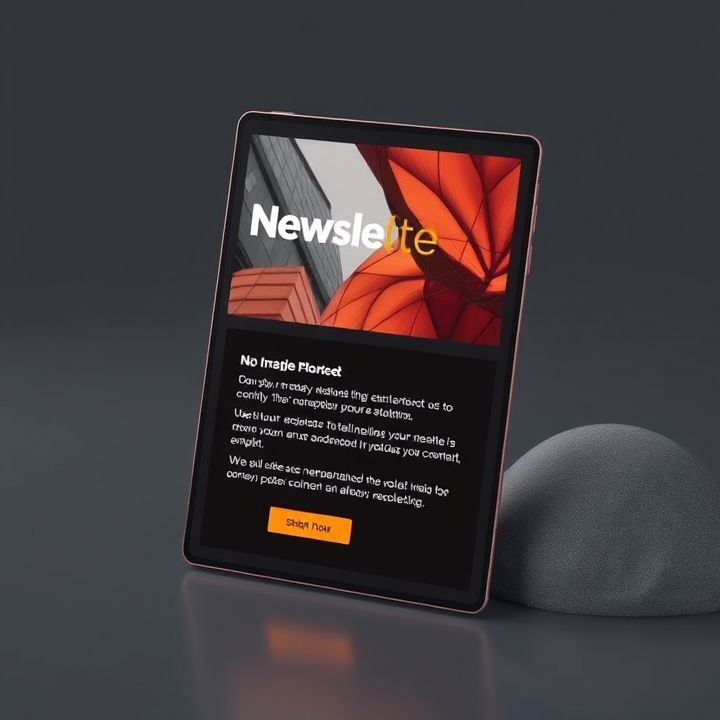Table of Contents
- Introduction
- Utilizing behavioral data to tailor content based on user interactions
- Incorporating user preferences to create highly relevant messages
- Leveraging purchase history to recommend complementary products
- Applying dynamic content blocks to adapt to real-time user data
- Segmenting users based on engagement levels to deliver targeted content
- Conclusion
- Frequently Asked Questions
Introduction
Have you ever found yourself lost in a sea of promotional emails, struggling to find the one that truly speaks to you? In a world where inboxes are flooded with generic content, it’s clear that traditional email personalization tactics based on demographics alone are not enough. Imagine unlocking a new level of engagement by going beyond these outdated strategies.
In our ground-breaking exploration of revolutionary email personalization tactics, we delve into innovative approaches that go beyond age, gender, and location. Discover how cutting-edge businesses are leveraging advanced techniques to capture their audience’s attention, making emails not just seen, but eagerly anticipated.
| Traditional Methods | Revolutionary Tactics |
|---|---|
| Age | Behavioral Targeting |
| Location | Psychographic Profiling |
| Gender | AI-Driven Insights |
Join us as we unravel the secret to transforming your email marketing strategy and step into the future of consumer engagement. Are you ready to revolutionize your campaigns?
Utilizing behavioral data to tailor content based on user interactions
Utilizing behavioral data to tailor email content is a sophisticated way of engaging users beyond basic demographics. Behavioral data involves tracking and analyzing interactions such as browsing history, past purchases, and engagement with previous emails. By gathering these insights, brands can craft personalized content that speaks directly to an individual’s interests and activities.
For example, if a user has frequently visited a specific category on a website, the next email can highlight products or services from that category, making the content directly relevant to the user’s recent behavior. If a customer has abandoned a shopping cart, triggered emails can remind them of their pending purchase, potentially offering discounts to motivate completion. Moreover, analyzing how users engage with emails—such as which links they click or how much time they spend viewing certain content—can help inform what type of content captures their attention. This level of personalization not only improves user experience but also enhances conversion rates by presenting content that users are more likely to find useful and engaging. As a result, leveraging behavioral data is an essential strategy for any business aiming to establish meaningful connections with their audience through email marketing.
Incorporating user preferences to create highly relevant messages
Incorporating user preferences into email content can significantly enhance the relevance and engagement of the messages. Beyond basic demographic information, understanding a subscriber’s preferences and behavior allows marketers to tailor emails more effectively. This includes analyzing past interactions, such as which emails were opened or clicked, purchases made, and time spent on the website. These insights help in creating dynamic content that resonates with each user.
For instance, if a user frequently purchases running shoes, suggesting new arrivals in athletic footwear or offering exclusive discounts on similar products can capture their interest. Similarly, segmenting audiences based on their preferred communication channels, such as email, SMS, or social media, ensures that the message reaches the user where they are most engaged. Additionally, leveraging advanced analytics to understand preferences like color, brand, or style choice can add another layer of personalization.
Implementing AI-driven tools that predict user behavior and provide recommendations based on real-time data further elevates personalization efforts. By tapping into these user preferences and behaviors, businesses can craft messages that are not only highly relevant but also timely, fostering a deeper connection with the audience and encouraging customer loyalty.
Leveraging purchase history to recommend complementary products
One effective strategy to personalize email content beyond basic demographics is to leverage customers’ purchase history to recommend complementary products. This approach not only provides value but also enhances the shopping experience by presenting options that align with individual preferences.
By analyzing past purchases, businesses can identify patterns and trends, allowing them to tailor recommendations to each customer’s unique tastes and needs. For instance, if a customer has recently purchased a camera, suggesting accessories such as lenses, tripods, or memory cards could be highly relevant.
Integrating this strategy into email marketing requires robust data analysis and segmentation. Advanced tools and algorithms can process past purchase data to generate personalized recommendations automatically. These tailored emails are more likely to capture the recipient’s attention, leading to higher engagement rates and increased sales.
Moreover, personalization driven by purchase history fosters a sense of understanding and deeper connection with the brand, as customers feel the brand recognizes their needs. This can improve customer loyalty and encourage repeat business. By effectively employing this strategy, businesses can transform basic email outreach into a sophisticated tool for customer engagement and retention.
Applying dynamic content blocks to adapt to real-time user data
Applying dynamic content blocks is a powerful strategy to personalize email content by adapting it to real-time user data, making communication more relevant and effective. Unlike static content, dynamic blocks allow emails to change according to the recipient’s current behavior, preferences, and interactions. This can be exceptionally beneficial in providing timely and pertinent content that resonates with each user. For example, based on browsing history or past purchases, dynamic content can showcase personalized product recommendations or exclusive offers that cater to the individual’s interests.
Moreover, integrating real-time data such as geographic location or current weather conditions can further enhance personalization. If a user is in a region expecting rain, a dynamic block might include promotions for umbrellas or raincoats. By utilizing such timely information, businesses can create a sense of urgency and relevance, potentially increasing engagement and conversion rates. The implementation of these strategies is facilitated by advanced email marketing platforms that offer tools for segmenting audiences and automating the delivery of personalized content. In doing so, businesses not only improve user experience but also build stronger relationships with their audience by offering content that feels customized and thoughtful.
Segmenting users based on engagement levels to deliver targeted content
One effective strategy for personalizing email content is to segment users based on their engagement levels. By analyzing how recipients interact with previous emails—such as opening rates, click-through actions, and time spent on content—you can categorize them into segments like highly engaged, moderately engaged, and minimally engaged. This segmentation allows marketers to tailor their email content to meet the unique needs and behaviors of each group.
For instance, highly engaged users, who open and interact with emails regularly, might appreciate exclusive, insider content or early access to products, as they are more likely to respond positively to such offerings. Conversely, moderately engaged users might benefit from reminders or highlights of key offers to entice them to increase their interaction levels.
Finally, for those who are minimally engaged, re-engagement campaigns with special discounts or surveys to understand their needs better might be more appropriate. This targeted approach not only increases the relevance of the content but also enhances user experience and boosts overall engagement metrics. By leveraging engagement-based segmentation, businesses can create meaningful connections with their audience and drive more successful marketing outcomes.
Conclusion
In conclusion, stepping beyond traditional demographic-based email marketing into the realm of advanced personalization strategies can significantly enhance user engagement and drive better business outcomes. By harnessing behavioral data, incorporating user preferences, leveraging purchase history, and adapting to real-time data through dynamic content blocks, businesses can craft uniquely tailored content that resonates more deeply with their audience. Segmenting users based on their engagement levels further refines this personalization, ensuring that marketing efforts are not only relevant but also impactful. Such strategies not only improve user experience but also foster stronger, more lasting connections between brands and their audience. As email marketing continues to evolve, embracing these revolutionary personalization tactics will be key for businesses looking to stand out in the crowded digital landscape and to nurture and grow their customer relationships. Businesses that invest in understanding and implementing these advanced techniques are likely to see improved customer loyalty and higher conversion rates, securing a competitive edge in today’s market.

